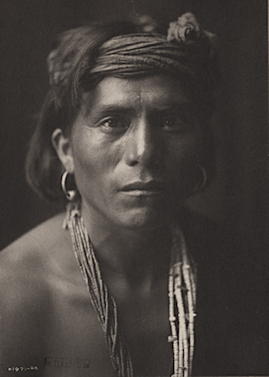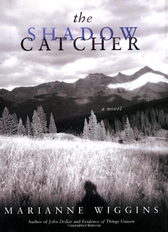Reading the first line of a book is like meeting someone for the first time, hearing their voice, getting a sense. An impression, right or wrong, or yet-to-be seen. You meet the narrator, whether directly (first person), or indirectly (omniscient), or somewhere in-between.
I believe every line should be as perfect as the writer can produce, but for the first line, that's absolute. It should be as perfect as poetry, every word selected with purpose and care, no matter its length. Consider Dickens’ 119-word “It was the best of times …” or Melville’s “Call me Ishmael.”
The first line is a promise to the reader the book is worth the read. The job of the writer is to make good on the promise.
Here I’ve chosen the first line from a novel I picked off a discount table (the unfortunate fate of some good literary works), attracted by its cover, title, and on closer look, the reviews, jacket copy, and photographs by Edward S. Curtis, the turn-of-the-century photographer of North American indigenous tribes, around whom the story revolves.
Let me tell you about the sketch by Leonardo I saw one afternoon in the Queen’s Gallery in London a decade ago, and why I think it still haunts me.
The Shadow Catcher by Marianne Wiggins / Simon & Schuster, 2008
The first line in The Shadow Catcher is a subtle tug, a beckoning gesture. "Let me tell you ... it still haunts me." It includes two of the themes—art and memory—and introduces the structure, that of overlapping a faraway past (signified by “Leonardo”) with a recent past (“a decade ago”) with the present (notice the present-tense form). By stating the time of day of this remembrance, the author quite naturally inserts a strong motif found throughout the book; that small phrase “one afternoon” conveys an entire scene of shadow and light and hence the feeling it evokes, a quiet connection it's likely to make within the reader. It also conveys the quality of light in the photographs of Curtis, and sets a tone. Read the line without it and you’ll see.


 RSS Feed
RSS Feed